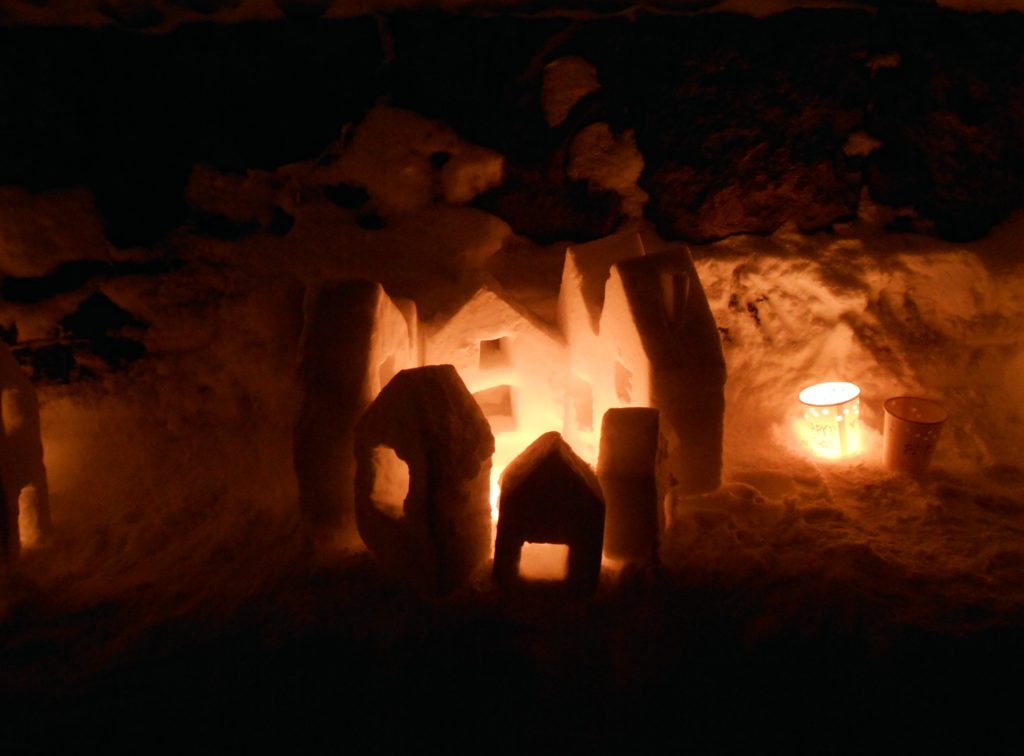While Hokkaido’s Snow Festival has made the city of Sapporo famous worldwide, you may not have heard of nearby Otaru; a seemingly quiet, romantic town that springs to life during February’s annual Otaru Snow Light Path Festival, featuring a dazzling array of candlelit snow lanterns and sculptures that welcome visitors from throughout Japan. Read on to discover why this city and festival to the north should be on your list of essential Japan winter activities.
Otaru Snow Light Path Festival
The Otaru Snow Light Path Festival, held each year throughout the second week of February, takes place in two main areas of Otaru. The Unga Kaijo area is the more famous of the two, as it is located alongside the Otaru Canal with its historic, restored warehouses. In the early 1900s, the canal was a part of Otaru’s port and was used to transport goods from the sea to the warehouses. The canal was restored in the 1980s and the warehouses converted into museums, stores, and cafes. Candles float inside the canal during the festival’s nighttime hours from 5-9 p.m., and the pathway is lit with gas lamps and snow lanterns, creating a perfectly romantic atmosphere. The canal is an easy 10-minute walk from Otaru Station.
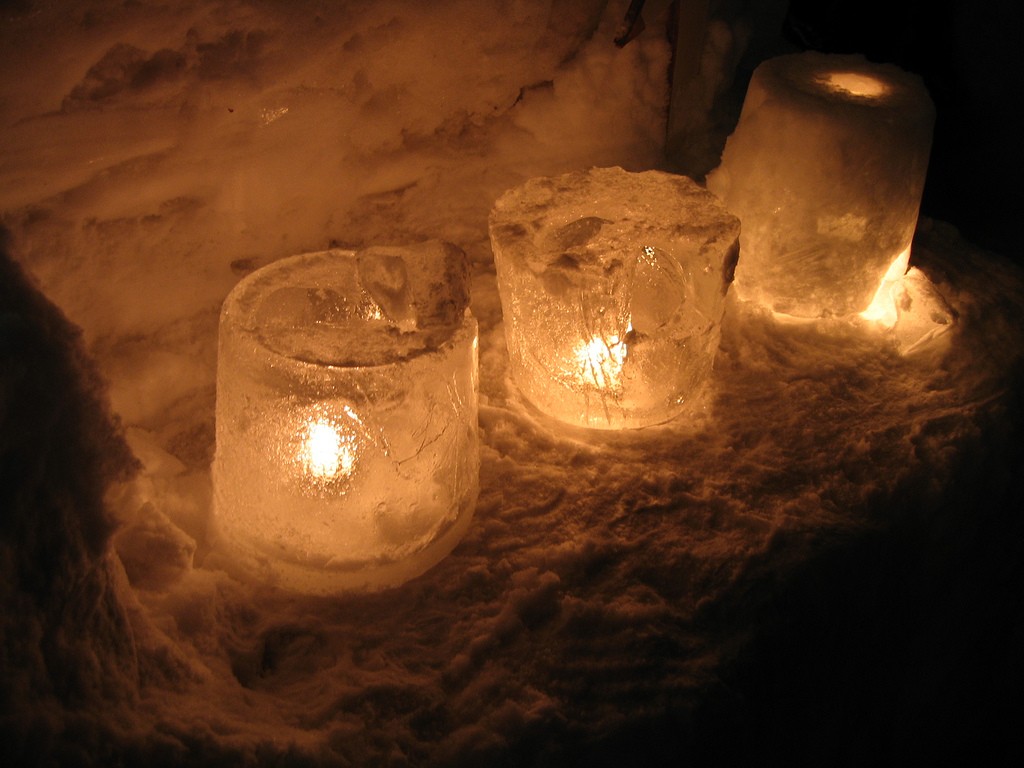
The Temiyasen Kaijo area is located between the station and the canal, on the former Temiyasen (Temiya Line) railroad tracks of the Japan National Railways, which have been converted into a popular walkway. During the festival, the tracks are decorated with many snow lanterns and sculptures lit from within by small candles, creating a beautiful soft glow. Otaru’s many volunteers faithfully relight each candle during festival nights. If you find yourself chilled during your stroll, you are welcome to warm up with a hot drink or a roasted sweet potato from one of the many food stalls in the area. And for those looking to raise the heartbeat with a traditional winter pastime, you can take advantage of the the hillside slides available free of charge by festival volunteers! In addition to the displays found in those two areas, many homes and businesses also participate in the festival by building snow sculptures or lanterns on their properties, temporarily transforming the entire town into a dreamlike snowscape.
7 More Things to Do in Otaru
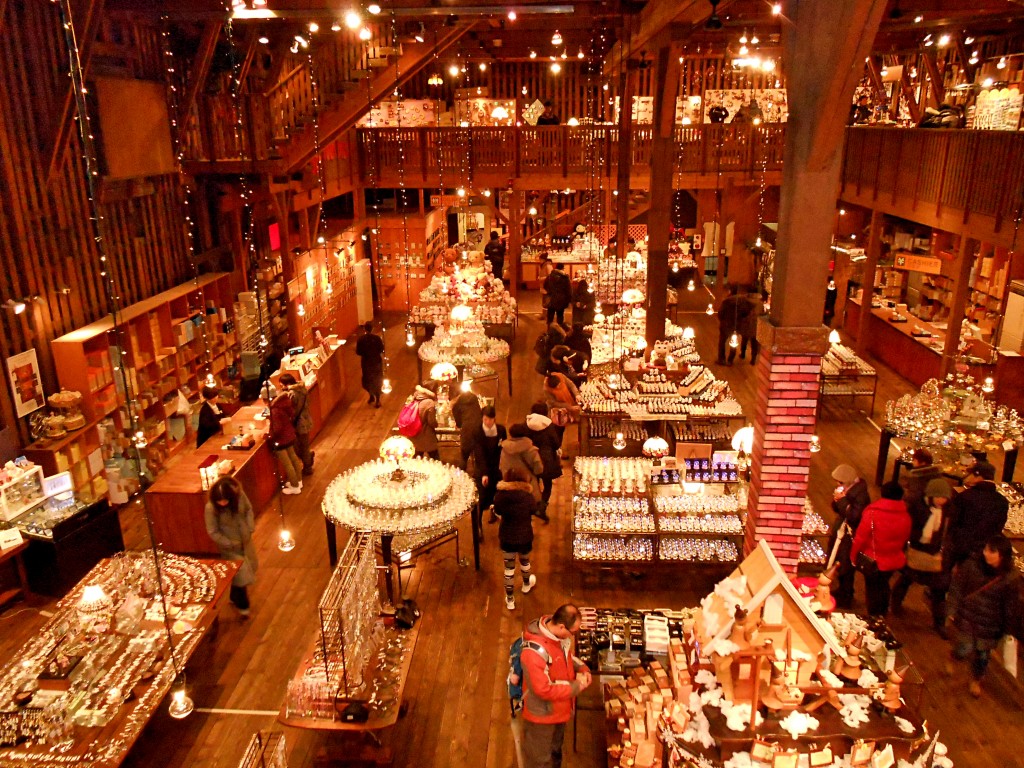
Beyond the Otaru Snow Light Path Festival, there are many more things to do in Otaru that can be enjoyed whether or not you find yourself in the city during the second week of February.
Sakaimachi Street
Just 10 minutes on foot from Otaru Station lies Sakaimachi Street, a former merchant street dating back to when Otaru was still a port city in the late 1800s and early 1900s. Otaru was influenced by Western-style architecture, a fact that is still reflected in many of the building exteriors in the present day. As for their interiors, many of the old buildings are now souvenir shops, restaurants, and museums. This street is a good place to shop for souvenirs like glassware and handicrafts as well.
Otaru Music Box Museum
Otaru is also famous for its music boxes (or orgel, as they are known in Japan). Although they are sold in many shops around town, by far the greatest variety can be found at the Otaru Music Box Museum. The museum consists of several buildings, but the main building can be recognized by the large steam clock in front of it. In addition to a store devoted to selling a wide range of music boxes, there are also some exhibits about the history of music boxes on the second floor.
Bank of Japan Museum
The Bank of Japan Museum is housed in a former bank dating from 1912. Kingo Tatsuno, who also designed Tokyo Station, conceived the building, which blends Japanese and Western styles. It has some interesting exhibits on the bank’s history, Otaru’s financial development, and the banknotes and bank vault itself.
Kitamichi Venetian Art Museum
Also on Sakaimachi Street is the Kitaichi Venetian Art Museum, part of Otaru’s historied Kitaichi Glass Company. The museum introduces the culture and lifestyle of Venice with rooms modeled after the style of 18th century palaces. The rooms are filled with Venetian glass art, traditional decoration, and even a full-size gondola.
Nishin Goten (Herring Mansion)
The herring fishing industry was a major part of Otaru’s early commercial growth; at the height of the herring boom, wealthy fishermen often built large mansions. The Nishin Goten, one such mansion that is renowned for its red roof, was built in 1897 and moved to its current hilltop location about five kilometers outside central Otaru in 1958. The historic building offers a snapshot of Otaru’s past, with fishermen’s tools on display and exhibits about the lifestyles of fishermen at the time. It can be reached either on the city bus or the Stroller tourist buses.
Fresh Otaru Sushi and Local Sweets
As a port city, Otaru is known for its deliciously fresh sushi. There are about 130 sushi restaurants in Otaru, and there is a sushi street called Otaru Sushiyadori Kai where 20 sushi restaurants operate. Otaru is also famous for its local sweets. LeTAO is a confectionary company with five different locations in Otaru, the main one being in front of the Music Box Museum. It houses three floors with a cake shop, cafe, and observatory. This particular location offers many samples including the double fromage cheesecake, whose great taste comes from Hokkaido’s delicious dairy products. You can enjoy a slice in the cafe and then walk to the top of the building’s clock tower for a good view of Otaru. Another treat not to be missed is the choux creme (cream puffs) from Kitakaro, also on Sakaimachi Street.
Asarigawa Onsen
Finally, you can enjoy hot springs and snow sports at Otaru’s Asarigawa Onsen. Located at the base of Mt. Asari along the Asari River, the resort area has 10 different hotels and inns with onsen as well as two bathhouses for day visitors. The ski resort is low-elevation and rarely crowded, so it is suited for beginners and families. A one day pass for the ski resort costs 2,900 yen, and you can have lessons for as little as 1,000 yen for 90 minutes. The town is located 9km from central Otaru and takes 20 minutes by car from Otaru Station. It can also be reached by bus from the JR Otaru train station in about 30 minutes (take Bus #13 at Gate #2).
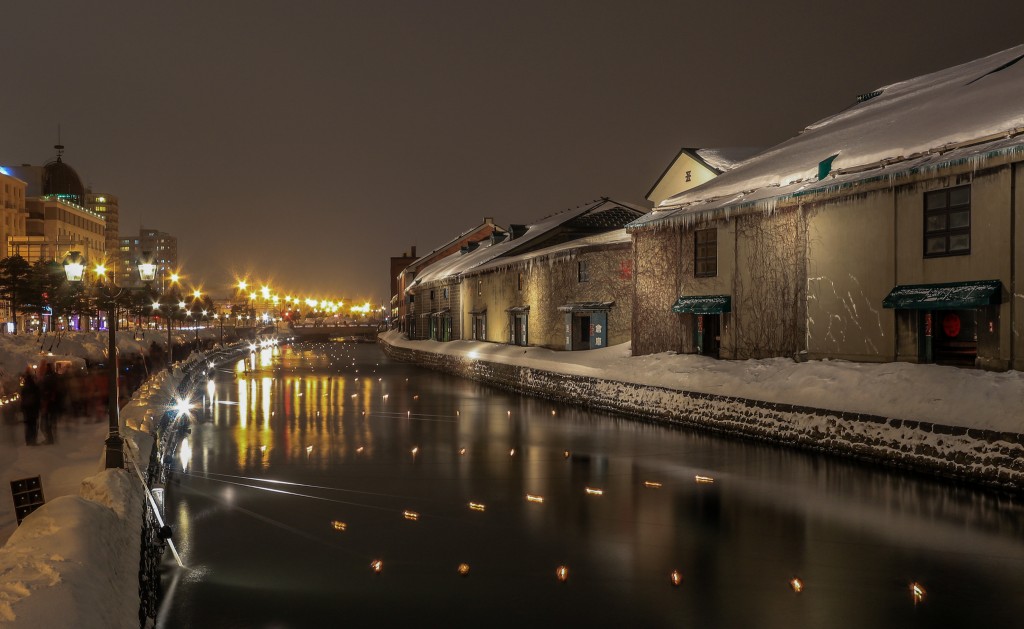
Getting to Otaru from Sapporo
Getting from Sapporo to Otaru is easy, even in winter. It’s just a quick daytrip from Sapporo, so you can experience both cities during one vacation. Simply take a direct train from Sapporo Station, which run every 15 minutes. The trip takes about 40 minutes and costs 1,240 yen (roundtrip).
Getting Otaru WiFi
Otaru is a beautifully charming historic town that provides a welcome contrast to the crowds and commercialism of Sapporo. Renowned for its historic canal area as well as handicrafts, music boxes, Venetian glass, fresh seafood, and delicious desserts, the village is at its most attractive during the Otaru Snow Light Path Festival. So don’t miss out on sharing this experience with your friends and family back home. By choosing Sakura Mobile, you can access reliable Docomo WiFi in Otaru through our convenient selection of mobile WiFi routers and SIM cards!
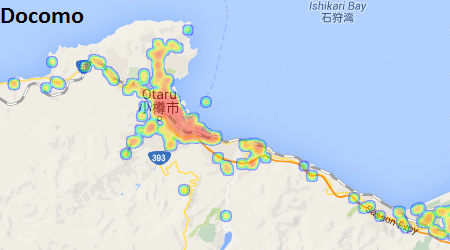
For more winter fun in Japan, be sure to read our tips on skiing in Japan and what to do at Hida-Takayama in winter.

